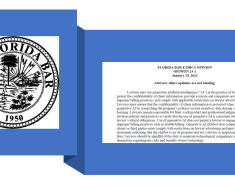Home >
Learn how adding more data and parameters can improve the performance of large language models, which are deep learning algorithms that can perform various natural language processing tasks. Find out the benefits and challenges of increasing data and parameters for large language models.
Question
The performance of large language models (LLMs) generally improves as more data and parameters are added.
A. False
B. True
Answer
B. True
Explanation
The correct answer is B. True.
Large language models (LLMs) are deep learning algorithms that can perform a variety of natural language processing (NLP) tasks, such as generating text, translating languages, answering questions, and more. LLMs use transformer models and are trained on massive datasets to learn general linguistic knowledge and capabilities.
The performance of LLMs generally improves as more data and parameters are added, as this enables them to capture more information and nuances of natural language, and to generalize better to new tasks and domains. Parameters are the variables that the model learns during training, and they determine how the model processes the input and produces the output. Data is the text corpus that the model is trained on, and it provides the examples and contexts that the model learns from.
However, adding more data and parameters also comes with some challenges and limitations, such as:
- Computational cost and efficiency. Training LLMs with more data and parameters requires more computational resources, such as memory, processing power, and energy. This can make LLMs more expensive and time-consuming to train and deploy, and also raise environmental and ethical concerns .
- Data quality and diversity. Adding more data to LLMs does not guarantee better performance if the data is noisy, biased, or unrepresentative of the target domain or task. LLMs can inherit and amplify the flaws and prejudices of the data they are trained on, and produce inaccurate or harmful outputs .
- Model interpretability and robustness. Adding more parameters to LLMs can make them more complex and difficult to understand and explain, especially when they make mistakes or generate unexpected outputs. LLMs can also be vulnerable to adversarial attacks or manipulation, where slight changes in the input can cause large changes in the output .
The latest Generative AI Fundamentals actual real practice exam question and answer (Q&A) dumps are available free, helpful to pass the Generative AI Fundamentals certificate exam and earn Generative AI Fundamentals certification.





